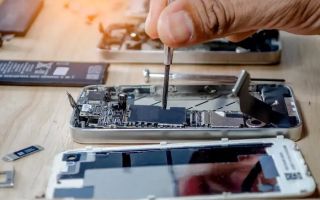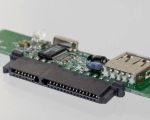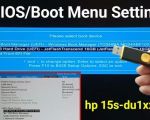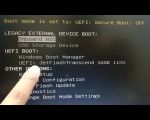Acer Notebook Boot from USB: Step-by-Step Process for Beginners
- Why Boot from USB on Acer Notebooks?
- Preparing the USB Drive for Booting
- Accessing BIOS Setup on Acer Notebook
- Setting Boot Priority in BIOS
- Troubleshooting Common Boot Issues
1. Why Boot from USB on Acer Notebooks?
Booting from USB on an Acer notebook can be essential for a variety of tasks such as installing an operating system, running diagnostic tools, or trying out a different operating system without affecting your current setup. Whether you're trying to troubleshoot your Acer laptop, perform a fresh installation of Windows, or use recovery tools, booting from a USB drive is a flexible solution.
This process is particularly useful for first-time Acer notebook owners or those who want to perform advanced tasks without relying on the internal hard drive. Booting from a USB drive is a straightforward process, and once you understand the steps involved, you can perform it anytime you need to use a bootable USB device.
2. Preparing the USB Drive for Booting
Before you can boot from USB on your Acer notebook, you need to prepare the USB drive correctly. Here are the steps to follow:
- Format the USB Drive: First, format the USB drive to the correct file system (FAT32 or NTFS). This can be done using the built-in disk management tool in Windows or third-party software.
- Create a Bootable USB: You can use software like Rufus, or the Windows Media Creation Tool, to make your USB drive bootable. These tools will install the necessary boot files from an ISO image of the operating system you want to install.
- Check Boot Files: Ensure that the boot files are properly copied to the USB. Without these, your Acer notebook will not be able to boot from the USB device.
Once your USB drive is set up correctly, you can move on to configuring your Acer notebook to boot from it.
3. Accessing BIOS Setup on Acer Notebook
To boot from a USB drive, you need to enter the BIOS (Basic Input/Output System) or UEFI (Unified Extensible Firmware Interface) on your Acer notebook. This is where you can configure the boot options. Here’s how to access the BIOS:
- Shut down your Acer notebook: Ensure your laptop is completely off.
- Power it on and press the F2 key: As soon as the Acer logo appears, press the F2 key repeatedly to enter BIOS. If this doesn’t work, try pressing the DEL key instead.
- Navigate to Boot Options: Once you’re in BIOS, use the arrow keys to navigate to the Boot tab, where boot priority options are listed.
After entering the BIOS, you can adjust the settings to boot from the USB device.
4. Setting Boot Priority in BIOS
Once you are in the BIOS setup, you need to change the boot order so that your Acer notebook will prioritize booting from the USB drive. Follow these steps:
- Find Boot Priority: In the Boot tab, look for Boot Priority or Boot Order settings. You’ll see a list of devices such as your internal hard drive, USB, or optical drive.
- Move USB to the Top: Use the arrow keys to move "USB Storage Device" to the top of the list. This tells the laptop to attempt to boot from the USB drive first.
- Enable USB Booting: If USB booting is not enabled, make sure to enable it in the BIOS settings to allow booting from the USB drive.
- Save and Exit: After changing the boot order, press F10 to save your changes and exit BIOS. Your Acer notebook will restart and attempt to boot from the USB device.
Now your Acer notebook is set up to boot from the USB drive, and you can proceed with installing your operating system or running recovery tools.
5. Troubleshooting Common Boot Issues
If your Acer notebook is not booting from the USB drive, there may be a few issues to address. Here are some troubleshooting steps:
- Check Boot Order: Double-check that the USB drive is set to the top of the boot priority list in BIOS.
- Ensure USB is Bootable: Make sure the USB drive is properly formatted and contains the correct boot files. If necessary, re-create the bootable USB using the recommended tools.
- Disable Secure Boot: Some Acer notebooks have a "Secure Boot" feature that can prevent booting from non-certified devices. You may need to disable Secure Boot in the BIOS settings.
- Try a Different USB Port or USB Drive: If the issue persists, try using a different USB port or a different USB drive to eliminate any hardware-related problems.
By following these troubleshooting steps, you should be able to resolve any issues and successfully boot from USB on your Acer notebook.
For more information on booting from USB or if you need accessories to enhance your experience, visit Ninja Stik for reliable USB boot tools and helpful resources.





























